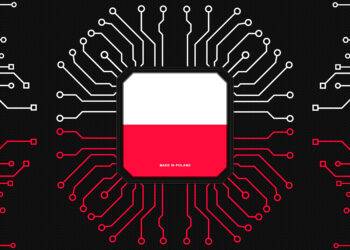Poland’s inflation rate in September has exceeded economists’ forecasts, rising to 4.9% year-on-year, according to the latest report by the Central Statistical Office (GUS). The figure marks an increase from the 4.3% recorded in August and has raised concerns about the country’s ability to rein in inflation as efficiently as other European nations.
According to a statement from ING analysts, inflation is being driven by persistent core inflation and slowdowns in efforts to curb price increases. “CPI inflation climbed to 4.9% year-on-year in September, up from 4.3% in August. On a monthly basis, consumer prices increased by 0.1%,” said the report. The core inflation rate, which excludes volatile categories like food and energy, has also shown a steady rise, adding to the challenges for Polish policymakers.
Key contributors to inflation in September include a 0.2% month-on-month increase in food and non-alcoholic beverage prices and a 0.2% rise in energy prices. However, fuel prices saw a decrease of 3.4% over the same period, providing only slight relief to overall inflation.
Challenges Ahead for Poland
The surge in inflation comes at a time when many European countries are successfully reducing price pressures. ING analysts emphasized that Poland is lagging in its fight against inflation compared to its neighbors. This disparity has been attributed to multiple factors, including domestic wage growth and delayed policy interventions.
“Poland has fallen behind in its battle against inflation,” economists from ING said, noting the delay in easing monetary policies by Poland’s central bank, the National Bank of Poland (NBP). They further predicted that inflation is likely to remain elevated through the end of the year, potentially hovering around 5% year-on-year.
This trend is expected to continue into 2025, with rising labor costs and delayed price corrections for energy further fueling inflationary pressures. The report highlights that Poland may experience inflation rates exceeding 4% well into next year, a level that will complicate any efforts to lower interest rates or stimulate economic growth.
Core Inflation Remains Stubborn
One of the major factors contributing to the persistent inflation is core inflation. ING estimates that core inflation rose to between 4.2% and 4.3% in September from 3.7% in August. They point out that part of this increase is due to wage hikes for public sector employees, which are driving up the costs of services like education. The recent pay raises for teachers, for instance, have been passed on to consumers through higher prices for private tutoring and language courses.
“Core inflation will remain a challenge through 2024 and 2025,” ING warned, adding that Poland’s high labor costs, which have grown rapidly in recent years, will continue to feed into higher prices for goods and services.
Outlook for 2025: Mixed Signals
Experts are divided on how inflation will evolve in the coming years. ING analysts predict that interest rates will remain unchanged until the second quarter of 2025, with the first potential rate cut happening around that time. The central bank is expected to reduce the reference interest rate by 25 basis points, with a total reduction of 100 basis points by the end of 2025, bringing it to 4.75%. This would still be significantly higher than the pre-pandemic levels.
However, there is a great deal of uncertainty regarding the government’s approach to managing energy prices. Decisions on price caps and subsidies for household electricity consumption will play a crucial role in determining inflation trends in the coming months.
Santander’s Cautious Forecast
Santander analysts also issued a warning about the upcoming inflationary challenges, forecasting a further rise in inflation over the next few months. “We expect inflation to peak between 5% and 6% year-on-year by March 2025,” they wrote, pointing out that much depends on government actions related to energy pricing.
By the end of 2025, inflation could fall below 4%, but core inflation is predicted to remain above 4% through the transition period. Such inflationary pressures will likely delay any meaningful reduction in interest rates until late 2025, prolonging economic challenges for businesses and consumers alike.


















